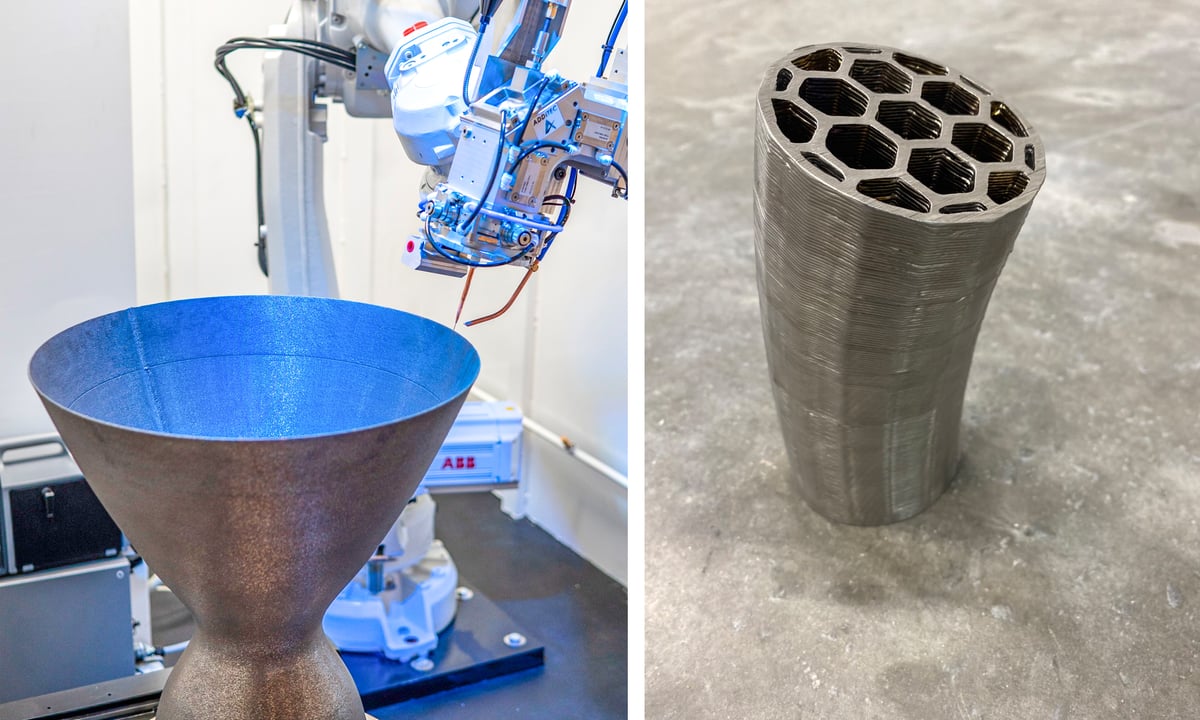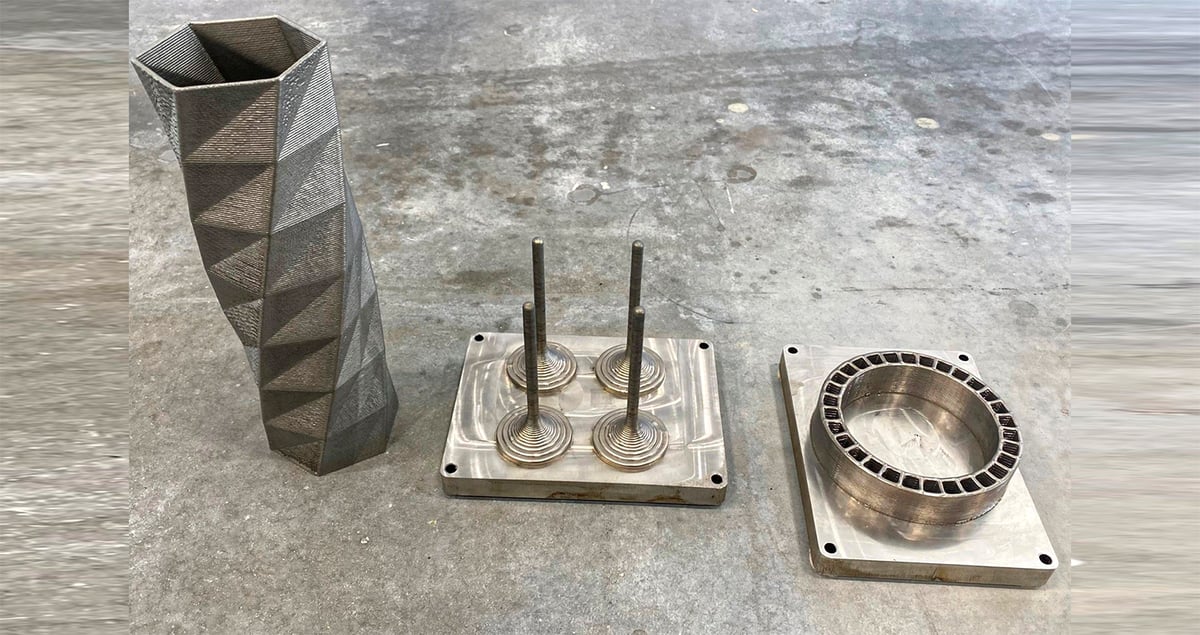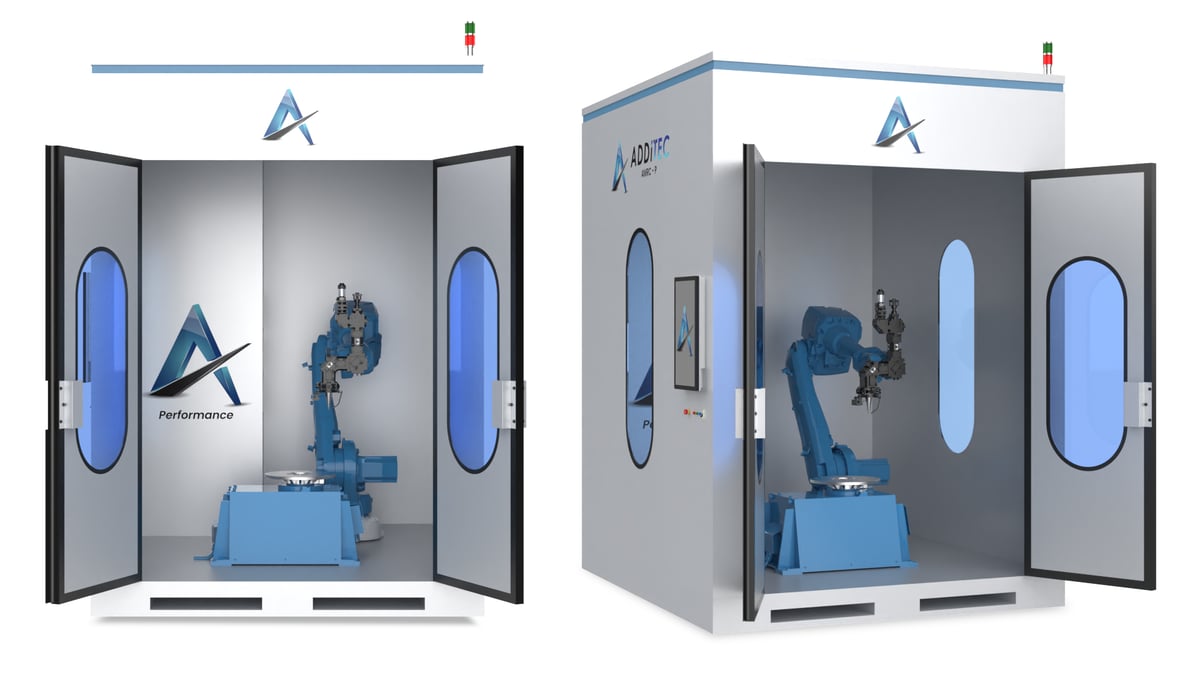The ability to produce solid metal replacement parts at or close to the point of need is the promise of several additive manufacturing technologies gaining ground in the oil & gas industry and among militaries, where operational shutdowns are extremely costly and the lead times for traditional forged replacement parts are long.
Although there are several methods of producing large metal industrial parts quickly, few are as small or as fast as the new portable additive manufacturing robot cell from Florida-based Additec.
The Performance AMRC-P (additive manufacturing robot cell portable) is designed to be deployable at sites where industrial metal replacement parts are critical, such as oil fields, nuclear plants, mines, and remote factories. The cell footprint is a mere 2.29 x 2.74 x 3.23 meters (7.5′ x 9′ x 10.6′).

The AMRC-P is a laser directed energy deposition (DED) 3D printer, which uses a laser to melt metal wire as it’s deposited from a print head mounted on a robotic arm. Print speeds are faster than powder bed fusion technologies (up to 4 kg/hr for titanium), and the part size is large, 1.8 meters in length, width, or height. The precision is less detailed than powder bed, but Additec’s DED boasts sub-millimeter layer thicknesses and complex geometries enabled by a six-axis robotic arm.
Compatible metals include iron, nickel, titanium, copper, and aluminum alloys.
In addition to being fast and large, laser-DED uses metal wire as a feedstock, which is more economical than metal powder used in many other 3D printing technologies.

The Performance AMRC-P technology debuted in Nov. 2022, but this latest version, introduced this week from Additec, has a more powerful fiber laser (6 Kilowatt vs. the previous 1.2 Kilowatt), and all of the components are fully contained in the cell. In the previous launch, the AMRC-P had the controller, chiller, and other parts sitting outside the cell.

The configuration change makes the technology “forward-deployable,” as Additec likes to say, meaning the factory-in-a-box can be shipped and installed on-site. It’s not quite containerized or camouflage-painted, like the Spee3D metal cold spray solution, but the 3,000 kg (7, 000 lbs) AMRC-P is factory-floor ready and comes with a HEPA air filter. The vacuum-sealed chamber can be argon filled or use a localized gas (argon or nitrogen) shielding solution.
Control of the AMRC-P is through established robotic arm additive manufacturing software Adaxis or Aibuild. The unit is also compatible with other robotic arm software control programs. Additec offers R&D services to a wide range of industries to help clients meet their specific needs.
Additec commercialized multi-laser DED technology in 2020 as a founding partner in the 3D printing company Meltio. Their multi-laser DED technology being used by Meltio today uses both metal wire and powder material feedstock. Additec now specializes in making turnkey metal AM robotic systems tailored to customer requirements as well as offering the Performance AMRC-P.
Tech Specs:
- Technology: Laser wire DED
- Laser: 1 x 6 kW fiber laser
- Layer height: 0.8 – 1.2 mm
- Speed: deposition rate 4 kg/hr
- Build volume: 2.29 x 2.74 x 3.23 meters (7.5′ x 9′ x 10.6′)
- Wire feedstock: 0.8 – 1.2 mm iron, nickel, titanium, copper, aluminum alloys
- Shielding: localized (argon or nitrogen)
- Inert chamber: vacuum and argon
- Robotic arm partners: ABB, Fanuc, Kawasaki, Yaskawa
- Price: $499,000
License: The text of "3D Print Metal Replacement Parts for Industry Anywhere" by All3DP Pro is licensed under a Creative Commons Attribution 4.0 International License.
